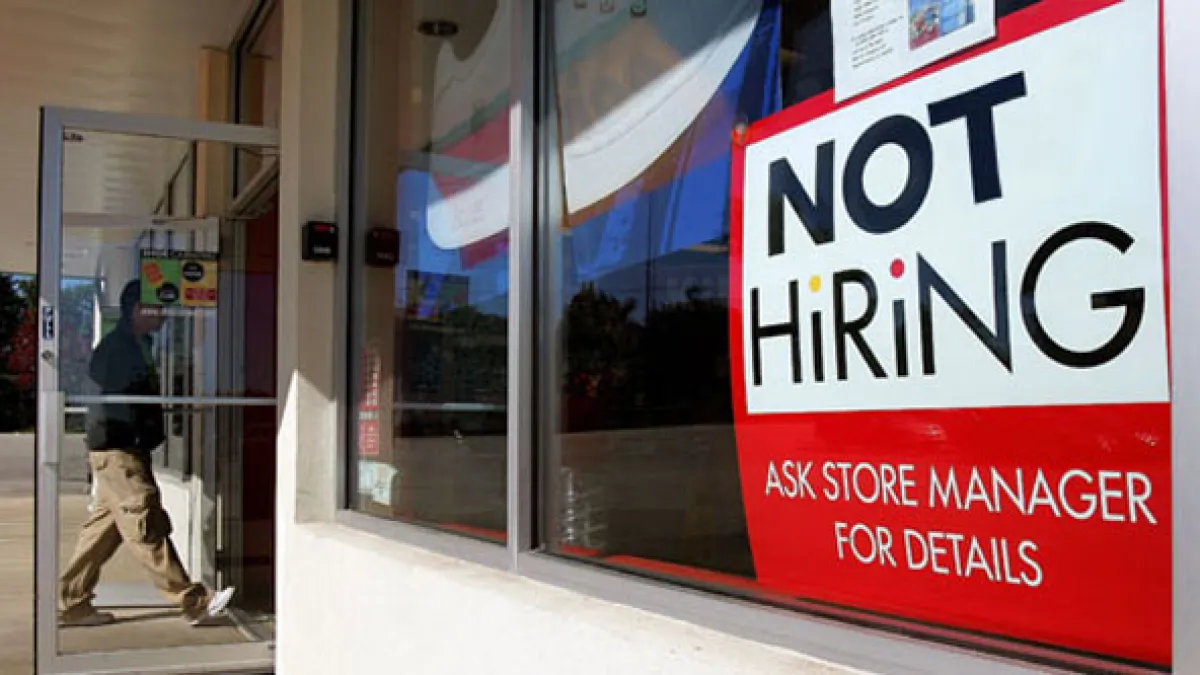
U.S. employers created just 22,000 new jobs and the unemployment rate rose a tenth of a percentage point to 4.3% in August, the Bureau of Labor Statistics reported Friday morning. The job growth total fell well short of expectations of around 75,000, providing another sign that the labor market has weakened considerably over the last few months.
Previous monthly reports were revised lower, as well, with the updated data showing a job loss of 13,000 in June — the first time the economy has lost jobs since December 2020, during the Covid pandemic, breaking a streak of 53 straight months of gains. The July tally was revised slightly higher, but the combined numbers for June and July moved lower by 21,000. Over the last four months, only 104,000 jobs were created, an exceptionally low number by historical standards.
Modest job gains in healthcare (+31,000) and social assistance (+16,000) were offset by losses in a number of other sectors, including federal government (-15,000), wholesale trade (-12,000) and manufacturing (-12,000). Over the past year, employment in manufacturing — which President Donald Trump wants to revive through tax cuts and an unorthodox campaign of tariff increases — is down by 78,000.
White House framing: The Trump administration downplayed the report. Trump had fired the head of the BLS last month after a weak jobs report, claiming the data was “rigged” to make him look bad, and on Thursday night he said that the “real” numbers would be out a year from now.
Kevin Hassett, the director of the White House National Economic Council, admitted that Friday’s numbers were “a little bit disappointing,” but said he expects the data to be revised higher in the future. Hassett claimed that better days for the economy are just around the corner, if not already here, thanks to the tax cut package Trump signed into law in July.
Treasury Secretary Howard Lutnick offered a similar line of analysis. Asked early Friday if the August jobs numbers would be trustworthy, Lutnick told CNBC that he expects the jobs data to get more accurate over time as “people who are just trying to create noise against the president” are removed from the federal bureaucracy, with the numbers revealing a much stronger economy, thanks to the president’s tariff policy. “This is going to be the greatest growth economy ... six months from now, a year from today.”
What the analysts are saying: For the most part, economists said the numbers confirm that the labor market is struggling, in part due to Trump’s tariff hikes, which have weighed on U.S. businesses exposed to global markets.
“The labor market is continuing to slow to stall speed,” Rebecca Patterson, an economist at the Council on Foreign Relations, told The Wall Street Journal. “The economic outlook is incredibly uncertain. Companies are being very cautious about adding personnel.”
Scott Anderson, chief U.S. economist at BMO Capital Markets, wrote in a commentary that hiring was “slumping dangerously close to stall speed. This raises the risk of a harder landing for consumer spending and the economy in the months ahead.”
RSM Chief Economist Joseph Brusuelas said while multiple factors are weighing on the labor market, including immigration policy and the ongoing retirement of the baby boomers, Trump’s tariffs are particularly notable. “The impact of tariffs on hiring is undeniable—not only in August’s numbers but throughout the May-August period, when tariffs pushed economic uncertainty to the highest level in years,” he wrote in a research note.
A group representing U.S. manufacturers said Friday that the latest jobs numbers indicate the need for changes in policy. “The August jobs report should hopefully spur on two important actions,” Scott Paul, president of the Alliance for American Manufacturing, said in a statement. “First, a cut in interest rates by the Federal Reserve. Second, concluding tariff actions and trade deals to provide businesses with the certainty they need to hire, invest in new capital equipment, and realign supply chains.”
Most analysts agreed that the report provides additional data to support a rate cut by the Federal Reserve when the central bank meets later this month. “The fourth month of sub-par employment performance signals a dramatic stall in hiring and fully supports the Fed starting rate cuts at the next meeting on September 17,” Nationwide economist Kathy Bostjancic wrote.